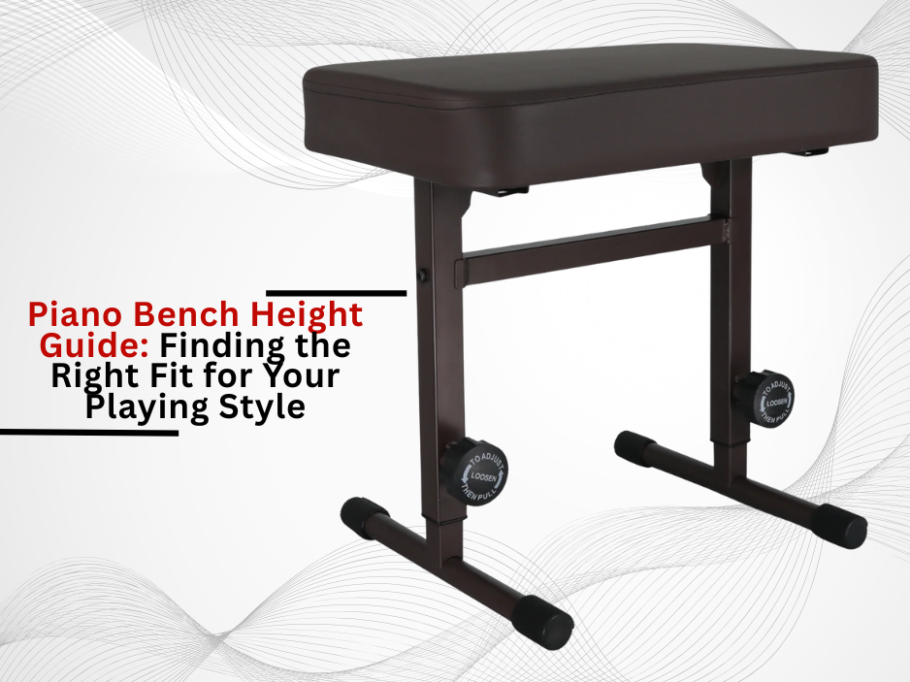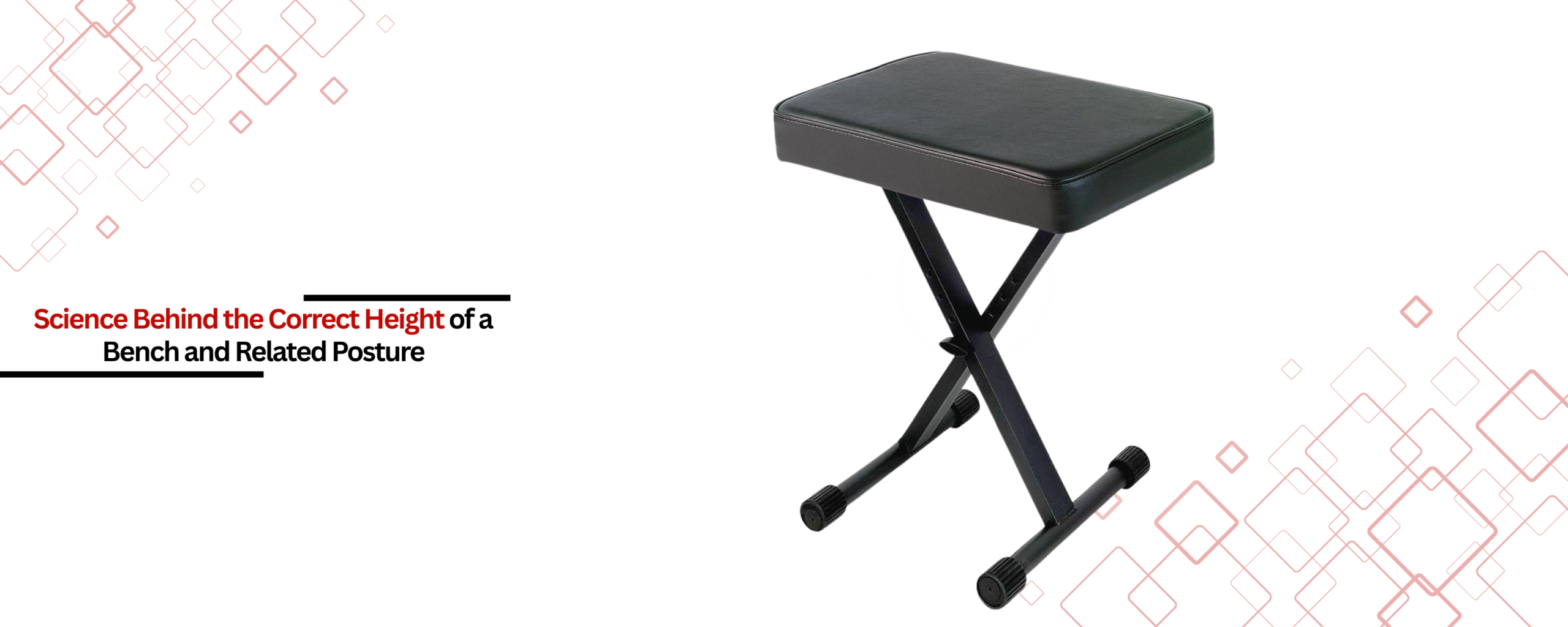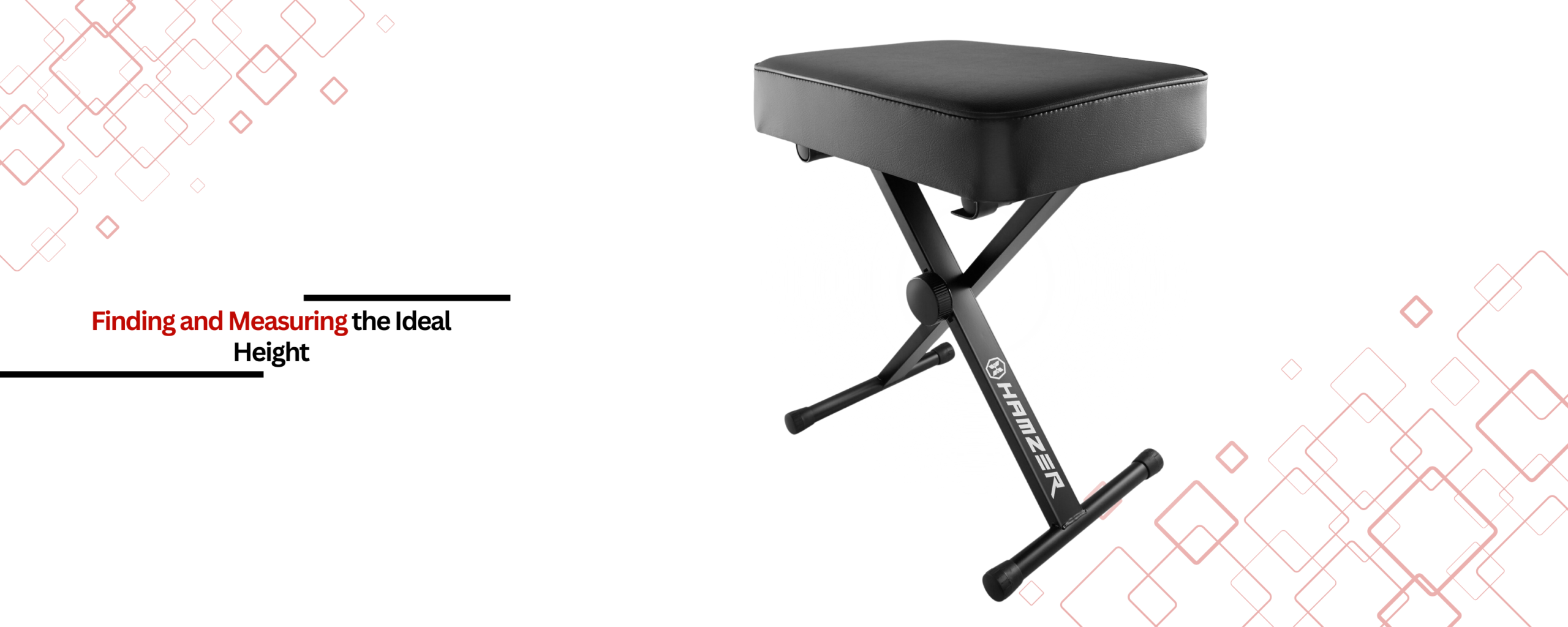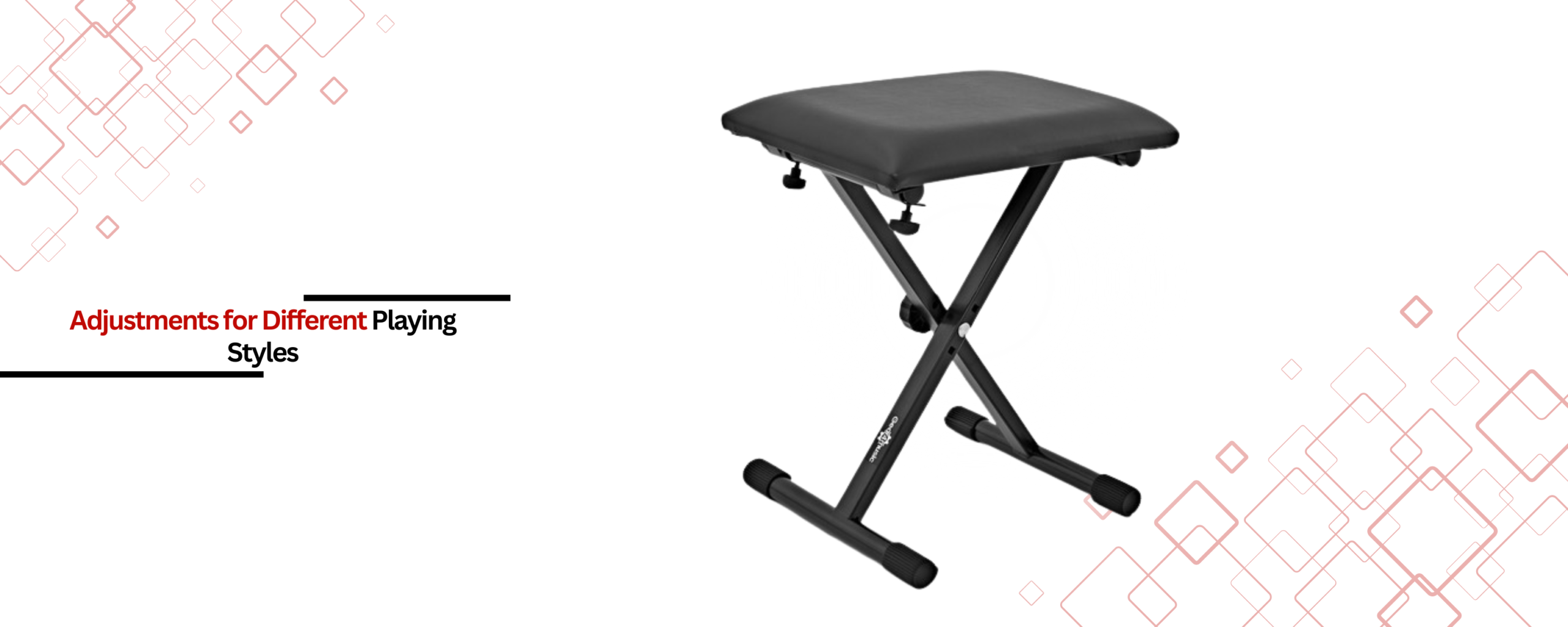The precise height of a piano bench might seem like a minor detail, but it has a serious impact on a musician’s comfort, technique, and holistic health. An incorrectly calibrated piano bench, for example, may cause slumping, strained shoulders, and hindered pedal action control, which negatively impacts performance and practice stamina. This guide discusses how to determine the optimal height of the bench relative to one’s playing style so that posture, ergonomics, and artistry can be achieved simultaneously.
To dive deeper, read, Top Picks for Keyboard and Piano Benches in 2025
The Science Behind the Correct Height of a Bench and Related Posture
The correct height of the bench helps maintain a neutral position of the spine, relaxed shoulders, and balanced arm angles while sitting down. The arms must also not be resting too high or too low; the ideal position is to have the elbows bent into a soft obtuse angle of 100–110, which allows the forearms to rest comfortably parallel to the ground. This alignment greatly reduces muscle tension, which allows better mobility of the fingers whether it’s playing the most delicate of arpeggios or powerful chords.
Step-by-Step Guide to Finding and Measuring Ideal Height
1. Starting position:
The first step of the process is to have someone sitting at the bench with their arms naturally resting on the keyboard, wrists neutral – neither pointing up nor down.
2. Elbow and Forearm Alignment:
With arms relaxed and parallel to the torso, raise the bench until the elbows are above keyboard level, creating a gentle slope from shoulder to fingertips.
3. Pedal Accessibility:
Adjust so that the feet can rest comfortably on the floor or the pedals with the knees relaxed. A high bench tends to position the toes and not the heel, which is posturally disorganized.
4. Trial and Refinement:
Assess the height relative to scales, chord work, and pedals. It is expected that some fine-tuning would be required to accommodate dynamic playing styles.
Adjustments for Different Playing Styles
Classical Pianists:
The classical school of playing requires more attention to posture due to intricate finger placement and pedal work. A higher bench will allow elbows to be just above the keys. This encourages sitting upright at the torso, which helps in controlling the arms.
Jazz and Improvisational Players:
To jazz guys, a lower bench is often useful. It allows easier body sway and relaxed movements, which is rooted towards improvisational jazz playing.
Contemporary and Electronic Performers:
For performers using hybrids with multiple keyboards or controllers, a mid-range height may be advantageous for a tiered arrangement. The main requirements become stability and speed in adjustment.
Tools and Features for Customization
1. Adjustable Benches:
Spindle, hydraulic, or lever-operated systems provide easy alteration of height. Aim for benches with wide ranges from 18–24 inches to accommodate different players and instruments.
2. Supplementary Accessories:
- Cushions: Provide additional height or support.
- Footrests: Change the posture of shorter players.
- Anti-Slip Pads: Stop the bench from moving during active play.
3. Fixed-Height Solutions:
For benches that are non-adjustable, height can be altered using platform risers. It is important for these modifications to keep the structure’s stability and balance.
Common Mistakes to Avoid
Overlooking Body Proportions:
Vertical differences in arm and torso span create a new variability; the height of the bench needs to consider individual anatomy instead of generic presets.
Ignoring Pedal Ergonomics:
If the bench prioritizes hand placement but neglects foot positioning, it creates a risk of lower back pain or uneven load distribution across the body.
Static Adjustments:
Height should be re-evaluated periodically, especially after growth spurts, recovery from injuries, or shifts in playing style.
Conclusion
Finding a perfect height for the bench is a never-ending cycle due to technique, anatomy, and intended artistry. Companies such as Roland, 5 Core, and Gleam emphasize how they strive to provide tools that aid these precise requirements. Regardless if it’s adjusting to classical precision, free-form jazz, or electronic rigs, a bench aids in muscle movement. By focusing on ergonomic alignment, pianists enable themselves to not only enable device control but also the hand to unleash their imagination.




